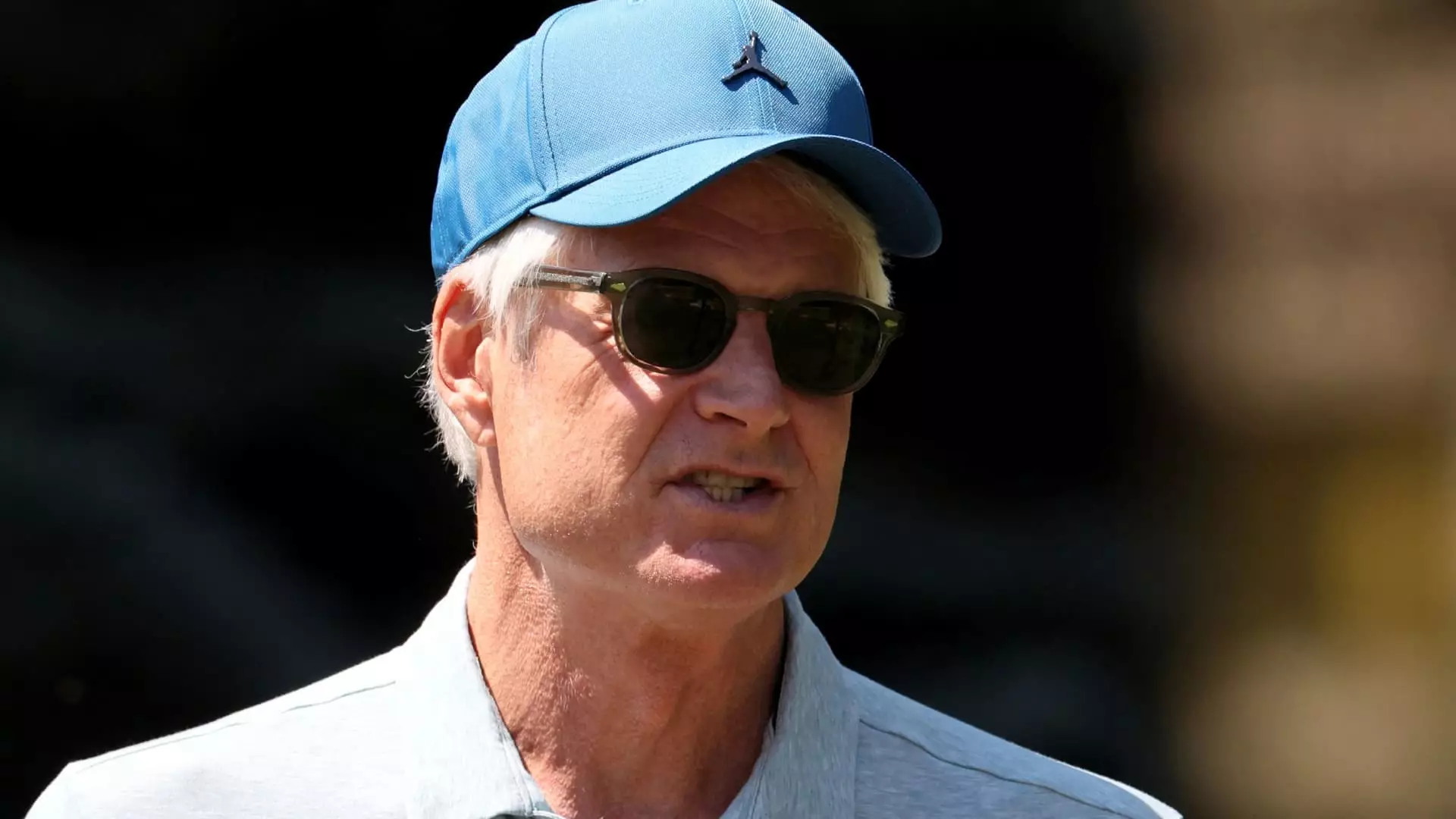In a significant shift for one of the world’s leading athletic brands, Nike has announced the departure of its CEO John Donahoe, with veteran executive Elliott Hill returning from retirement to take over the reins. The transition comes as Nike grapples with ongoing challenges, marked by a notable downturn in sales and the need for a strong leader to navigate the company through turbulent times.
Shifting Leadership Amidst Market Turbulence
John Donahoe, who has been at the helm since January 2020, will officially step down on October 13, with Hill set to assume the position the following day. Donahoe stated that the decision for a leadership change had become increasingly clear, noting that Elliott’s extensive background and passion for the sports industry made him the right fit to steer Nike toward future growth. Even though Donahoe’s tenure coincided with considerable growth in annual sales—from $39.1 billion in fiscal 2019 to $51.4 billion in fiscal 2024—his leadership faced criticism for the company’s apparent loss of innovative momentum.
This critical restructuring comes after Nike has pivoted its strategy to focus on direct-to-consumer sales, a move that shifted the brand towards e-commerce but was not without its setbacks. Hill’s return is seen as a vital step for the company, particularly in a climate where morale appears to be in decline and innovation is critical for maintaining competitive edge.
Nike’s current predicament highlights the delicate balance between direct sales ambitions and the creative innovation the brand was once renowned for. Market analysts have raised concerns regarding diminished consumer interest, particularly in the lucrative Chinese market, exacerbated by disappointing fourth-quarter results earlier this year. In these results, Nike projected a 10% drop in sales for the upcoming quarter—significantly worse than the anticipated 3.2% decline that experts had forecasted.
With this backdrop, the company faced its worst trading day in history following the announcement of these results, casting doubt on Donahoe’s long-term capability to lead the company effectively. Despite the support from Nike co-founder Phil Knight, speculation mounted that a leadership change could be imminent.
A Veteran Steps Back In
Elliott Hill’s return to Nike is steeped in his deep-rooted history and familiarity with the brand. His remarkable journey began as an intern in the 1980s and culminated in leading the company’s consumer and marketplace division before he retired in 2020. Hill’s previous experience has equipped him with the insights necessary to rejuvenate the company’s culture and restore morale among employees, a principal aim highlighted by senior analysts in the wake of his appointment.
As Hill resumes leadership, there is an enormous task ahead to rekindle Nike’s spirit of groundbreaking innovation. He expressed eagerness to reunite with long-time colleagues and establish new impactful partnerships. Hill’s sincere affection for the company shines through his statements, emphasizing his commitment to steering Nike back to its core principles—principles of creating pioneering products that resonate with consumers.
Cultivating a Culture of Innovation
One of the paramount challenges facing Hill will be revitalizing the culture at Nike, which many believe has suffered during the latter part of Donahoe’s tenure. As the brand works to navigate external pressures and sharpen its creative edge, employee morale and a sense of community will be essential in rekindling a successful work environment.
Senior analyst Jessica Ramirez emphasizes Hill’s extensive understanding of the unique culture that Nike prides itself on, which she identifies as a critical asset in the fight to heal morale and motivate the workforce. Hill’s leadership will likely focus on fostering a collaborative spirit and innovative mindset among employees, ensuring that all stakeholders feel invested in Nike’s shared mission moving forward.
While local reinvigoration is key, Hill’s leadership will also have a broader strategic focus. Nike must address its previous strategic missteps of distancing itself from wholesale partnerships, which inadvertently allowed emerging competitors like Hoka and On Running to gain market share. As a result, strengthening relationships with established distribution channels is likely to become a priority under Hill’s stewardship.
Nike’s immediate future lies in its ability to balance online transitions with traditional retail partnerships while minimizing disruptions and fostering innovation—a challenge easier said than done in today’s competitive landscape. With the company bracing for a comprehensive rebuilding phase, the next chapter for Nike under Hill’s guidance could define the brand’s trajectory for years to come. The athletic giant is positioned at a crossroads, and how it adapts to the changing marketplace will undoubtedly be a topic of significant interest in the coming months.

